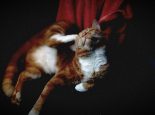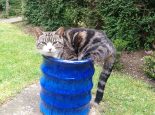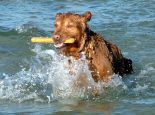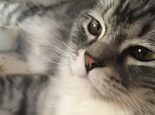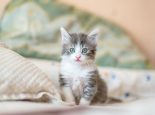Vet’s diary: the bare bones of learning

Peterborough vet Laura Frost experiences the conflicting emotions involved in learning new skills
Have you ever experienced the feeling, when embarking on something new, that lies somewhere between excitement and fear? Maybe, for the sporty readers, it is what you feel on the start line of a race: that fine line between dread and anticipation.
One of the things that attracted me to the veterinary profession was the so called ‘life long learning curve’ of veterinary medicine. The more I think about it, the more I realise that it is a bottomless pit of knowledge and skills. Having just sat my last written exam in soft tissue surgery, I have refocused my attention of orthopaedics, hoping to acquire the skills to fix fractures and deal with joint surgery over the next few years.
X-ray checks
The universe was definitely paying attention. On Monday I expressed this interest to my boss (and talented orthopaedic surgeon of many years experience). Little did I expect not one, but two patients with broken legs to come into the practice over the next few days. So instead of just calling my boss and saying I had a surgery for him, I took some x-rays, got out the text books and made a plan for fixing them. It was like being back at vet school; the nerves while waiting for him to review the images and critique my plan. With a few minor alterations and a lot of help getting all of the equipment ready, we were set for surgery number one.
The first patient was a six-year-old cat that had been hit by a car. The tibia and fibula (shin bones of the hind leg) were both broken. The main fracture was clean through, but there was an additional break higher up that complicated things. We planned to put a metal plate on the main fracture with two to three screws in each end to hold it together while it healed. Because the fibula is so small in the cat it doesn’t need to be fixed and will heal as long as the tibia is stabilised. We exposed the bone at surgery and managed to align the ends.
The turn of the screw…
Before I knew it the plate was in the correct position and I had a drill in my hand. I don’t mind admitting that I felt a bit sick. I tentatively pressed the button and the drill turned slowly. With some moral support from my boss and the reassurance that I wouldn’t do any harm, my confidence grew. Five screws later and the bone felt secure. We took an x-ray to check our progress. My heart rate climbed as I waited for the image. It looked great. The feeling of satisfaction going from seeing the leg all bashed up and painful to properly aligned was fantastic. I was so happy I almost forgot that we had another fracture to repair.
Getting the hang of it
As a two-surgery team I was glad to hand the other fracture over to my boss who swiftly and skilfully placed a couple of pins before closing the wound and waking up the cat. Two days later we had a greyhound rushed in with a broken leg. This time it was a front leg – again both bones (the radius and ulna had broken). In this case both bones are important for stability of the leg and both needed a metal plate put in place. As before, two repairs and two surgeons. This time I didn’t feel panic when I had the drill lined up. I knew everything was lined up as needed and I quickly placed the necessary holes for the screws securing the bone. The other plate was placed by the colleague and the leg was restored back to its normal shape.
A satisfying but exhausting week. I am pleased to have learnt a new skill to help my patients when they need it, as well as conquering my apprehension of the power tools – so much so I might start doing DIY at home. Bring on the wonky shelves!
 Laura Frost MRCVS MA VetMB is a vet at local veterinary practice Pengelly and Mizen.
Laura Frost MRCVS MA VetMB is a vet at local veterinary practice Pengelly and Mizen.
Pengelly and Mizen Veterinary Surgeons 89-93 Park Road, Peterborough PE1 2TR T: 01733 554953 Emergencies only: 01733 896000 www.pengellyandmizen.co.uk








